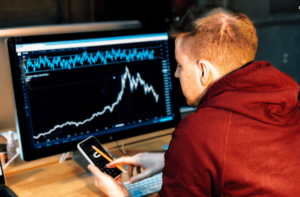International trading:
It is consist of an intersection between residents of different countries. There are two parties involved in International Trading exporter and importer. The first movement in between that is Goods and shipping documents transfer from exporter to importer, then the importer transfers payments to an exporter.
International trade:
International Trade is referred to as the exchange or trade of Goods & services between different nations or companies belonging to different nations.
Methods of payments in International Trading:
There are four methods here.
- Open Account
- Advance Payment
- Documentary Collection
- Documentary Crafts
- Open account:
In this method, we say that if the exporter and importer have a sale contract, then based on the exporter sales the goods to the importer. After that, it prepared the documents like invoices, shipping documents, and packing lists sent to the importer. Importer clear the ship documents on the behalf of contract. In an open account, the Goods get already without payments. So that there is no risk of importer. The exporter is the high risk at open account transaction. This transaction is only based on importer trust. It is also known as direct shipment.
- Advance payment:
It is the opposite of opening an account. In this method, the importer and exporter enter into a sale contract strategy through an advanced method. They agree that, build the sale contract through advance payment. The payment send advance from the importer to the exporter. The exporter receives the payment without Goods shipping. There is no risk to the exporter.
- Documentary collection:
There are two types of documentary collection.
- Documents against payments
- Documents against acceptance
The DP means documents against payment. And the DA means the importer has a time as pr as agree on terms then the payment. The importer received shipping documents within 7 steps.
- Documentary craft:
It is also known as letter of Credit Transaction. This method is useful to both parties. It is one of the most secure Methods. It is most used instruments of international payments. Also described as “The lifeblood of international commerce”.
Import and export business:
Importing and exporting is how you can get clothing from China, olive oil from Spain, cars from Germany, and so on. The Export Management Companies handle the hiring of dealers, Invoicing, Advertising, Marketing, Packaging, Shipping, Financing and a lot more. While Export Trading Companies find what foreign markets want and then find domestic sources to deliver that product.

Steps of import and export:
- Cover the business basics
This needs to register your business, register a domain name, obtain business licenses. You read the rules and regulations of the market in this you start a business.
- Identify your products and market
You need to learn about rules and regulations of market when importing and exporting in business. There are some questions raised:
- What is the product or service you want to sell?
- Who is your target market or end users?
- What country or countries will you import from or export to?
- Who will be your trade partners?
- Source you supply
When you get in touch with a wholesaler or manufacturer’s representative, you’ll have a bead on a supplier for your product. Generally, you can also find suppliers through companies like Alibaba, Global Sources, and Thomas Register. You will need to convince your potential supplier of the benefits of entering the U.S. market and figure out the logistics of taking their product. Maybe you’ll become your supplier.
- Price your product
The business of import and export includes two keys.
- Volume of units sold
- The commission made on the volume
Be sure to price your product such that your market doesn’t exceed what a customer is willing to pay. Importers and exporters typically take a 10% to 15% markup above what the manufacturer charges when you buy the raw product.
- Identify your customers
It’s one thing to have an idea of who your customers are or what your target market is, but it’s another thing to get them on the line and have them agree to buy from you or sell to you. You usually need to find distributors and clients, and there are a few ways to do that. Cold-calling is also a time-honored and useful tactic.
- Finalize the logistics
This is your biggest and most complicated step and the one that covers a variety of bases, from finalizing your supply chain to potentially moving into an office space if you have started as a home-based business. That step will also be markedly different depending on what kind of import/export business you decide to start.
Strategies:
There are many strategies we learn about international trading in correction territory business.
Shipping lanes: The organization would probably have used significant shipping lanes like the Silk Street, sea courses in the Indian Sea, and the Mediterranean Ocean. These courses associated Europe, Asia, and Africa, considering the trading of merchandise like flavors, silk, valuable metals, and other important items.
Products and Wares: Well-known things exchanged included flavors, and materials. valuable stones, metals (gold and silver), and other extravagant things. These products were exceptionally pursued in various areas of the p1 Key exchanging centers during this period included urban communities like Venice, Genoa, Constantinople, and Alexandria, and different port urban communities along the Indian Sea coast like Calicut and Malacca.
Oceanic Innovation: Advances in shipbuilding and route, like the utilization of the compass and astrolabe, worked on sea exchange. Ships like the carrack and the caravel were intended for long journeys, empowering dealers to travel further and convey more freight.
Economic accords and Partnerships: To work with an exchange, the office could have participated in arrangements and collusions with different political substances, nearby rulers, and other exchanging countries. These arrangements guaranteed safe entry for vendors and the assurance of their merchandise.
Financial Effect: Exchange during this period fundamentally influenced the districts’ economies in question. It prompted the gathering of abundance, the ascent of strong shipper classes, and the spread of social and mechanical advancements.
Social Trade: The trading of merchandise likewise prompted the trading of thoughts, advancements, and societies. This period saw the spread of information, including logical and numerical progressions, workmanship, and writing, between the East and West. Social media exchange is a unique concept of an online border system that creates a win-win situation for users.
Guideline and Normalization: The organization could have been associated with the guideline of exchange works on, normalizing loads and measures, and guaranteeing the nature of products. This kept up with trust and effectiveness in exchange activities. Worldwide Exchange Organization is a main provider of top-notch steel, froth, and texture items for producers in various businesses.

Worldwide exchange
We welcome you to step into the universe of worldwide exchange and open up new doors for your business. With our custom-tailored supply benefits, your business can develop to achieve its actual potential. By obtaining the parts expected to make one-of-a-kind and significant items, you can offer the best for your client, while bringing down costs and accomplishing a more worthwhile net revenue a net.
Spread of Thoughts and Information
Science and Arithmetic: Information from the Islamic Brilliant Age, remembering headways for math, cosmology, medication, and designing, spread to Europe through shipping lanes. This incorporated the presentation of Arabic numerals and variable-based math.
Renaissance Impact: The convergence of old-style information and texts from the Byzantine Realm and the Islamic world aided prod the European Renaissance. Interpretations of Greek and Roman works, as well as Islamic grants, were urgent to this social restoration.
Strict and Philosophical Trade
Strict Connections: Shipping lanes worked with the spread of significant religions like Islam, Christianity, Hinduism, and Buddhism. Ministers, traders, and explorers conveyed strict texts and practices to new areas.
Philosophical Discoursed: The trading of philosophical thoughts was normal, with researchers in Europe, the Center East, and Asia taking part in exchanges that impacted nearby educated customs.
Workmanship and Engineering
Imaginative Styles: Creative styles and procedures were traded between societies. For instance, Islamic mathematical examples affected European workmanship and engineering, while Chinese porcelain and silk were exceptionally valued in Europe.
Engineering Advancements: The trading of design information prompted the transformation of different styles. For example, Gothic design in Europe consolidated components from Islamic engineering pointed curves and unpredictable tile work.
Language and Writing
Language Spread: Exchange worked with the spread of dialects. For example, Persian turned into a most widely used language in many pieces of Asia because of the impact of the Persian Domain and its dealers.
Writing: Artistic works were traded, with awe-inspiring stories, verse, and logical texts being deciphered and circled. Works like “The Bedouin Evenings” became known in Europe, affecting nearby writing.
Food and Flavors: The exchange of flavors, like pepper, cinnamon, and nutmeg, presented new flavors and culinary methods to various districts. This lastingly affected worldwide food. In food industries, flavors play an important role in pleating the goodness of food.
Rural Trade: New yields and farming practices spread along shipping lanes. For example, crops like sugarcane, rice, and different organic products were acquainted with new areas, modifying nearby weight control plans and cultivating rehearses. Coca-Cola is an example of rural trading. It has used rural trading to large their reach and increases sales in rural areas.
Mechanical and Craftsmanship Trade
Mechanical Developments: Innovative progressions, for example, the print machine, explosive, and navigational instruments like the compass and astrolabe, spread through exchange organizations, reforming different parts of society. It is more than the technical awareness; that is an art term that mixtures the creativity with curation.
Craftsmanship: Procedures in metalworking, materials, pottery, and different artworks were traded, prompting enhancements and advancements in nearby ventures. Well-crafted code explains the simplicity, lack of duplication, readability, and elegance.
Social and Social Practices
Design and Dress: The trading of materials and attire styles affected style in various districts. Silk and other rich textures became famous in Europe, while European styles additionally advanced toward Asia. The process of designing the dresses according to the desires of customers is fashion design trading. Today it will be so easy to purchase any dress via net.
Music and Performing Expressions: Instruments and styles were traded, enhancing the melodic practices of different societies. Dance, theater, and other performing expressions likewise saw impacts from various locales. Many instruments will be available on the online store. They were very costly.

Influence on Neighborhood Societies
Social Syncretism: The mixing of various social components frequently prompted syncretism, where new, half-breed societies and customs arose. These societies play an important role in society as they give a sense of community and ownership to residents. It is a source of social support and links for residents.
Conservation and Change: While a few neighborhood customs were protecting and reinforced. Others were changed through the combination of unfamiliar components. Neighborhoods play a vital role in forming the lives and experiences of inhabitants, and they can have purely impact on an individual’s physical, and mental.
Social trade:
Social trade during the 1400s established the groundwork for our interconnected world today, molding the improvement of social orders and cultivating a rich embroidery of worldwide societies.
Benefits of International Trade:
- Increased economic growth
- Job creation
- Lower prices for consumers
- Increased access to resources and goods
- Increased innovation and competitiveness
- Diversification of markets
- Improved diplomatic relations
Who Do We Work With?
Global Exchange Organization are huge volume provider of a few items, including steel wire, spring units, steel tubes, froths, textures, and felts. These items are especially appropriate to makers of furniture, beds and bedding, and car insides. We likewise work with development, geo-materials, apparel, and footwear organizations.
ITA:
Worldwide Exchanging Office (ITA) gives specific exchange and working capital arrangements. To painstakingly oversee risk, further develop income, and work with nearby and global exchange exercises.
Developing your business:
Our administrations intend to empower you to zero in on what you specialize in to develop your business. Past dealing with the progression of items from their commencement to the end client. We give inside and out criticism and bits of knowledge. As well as deal with the progression of your organization’s store network funds to guarantee. That your business is exchanging at the ideal limit and that it is strategically set up for development.


